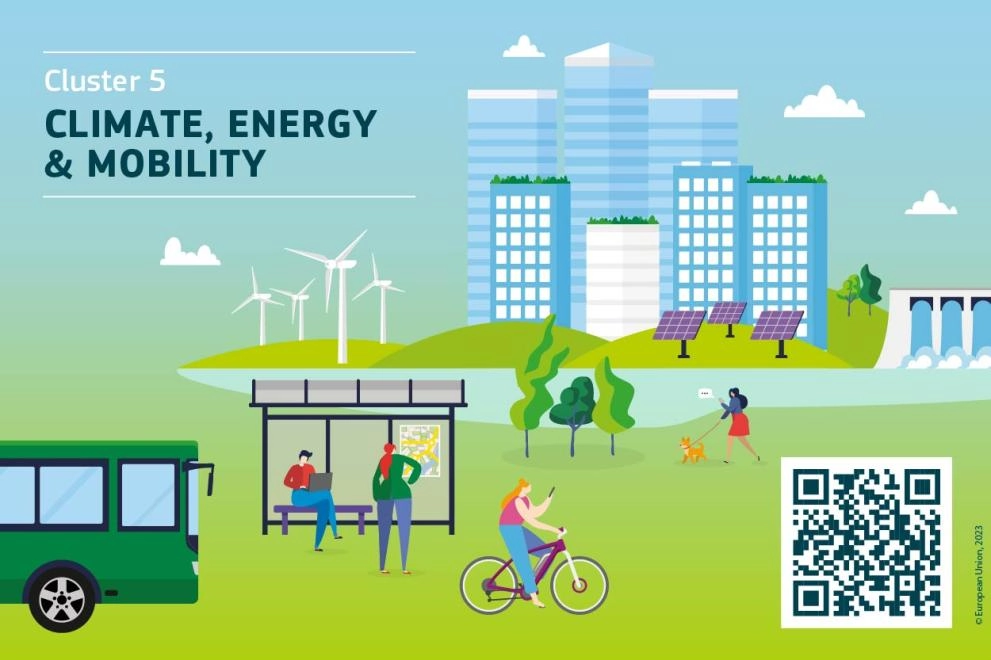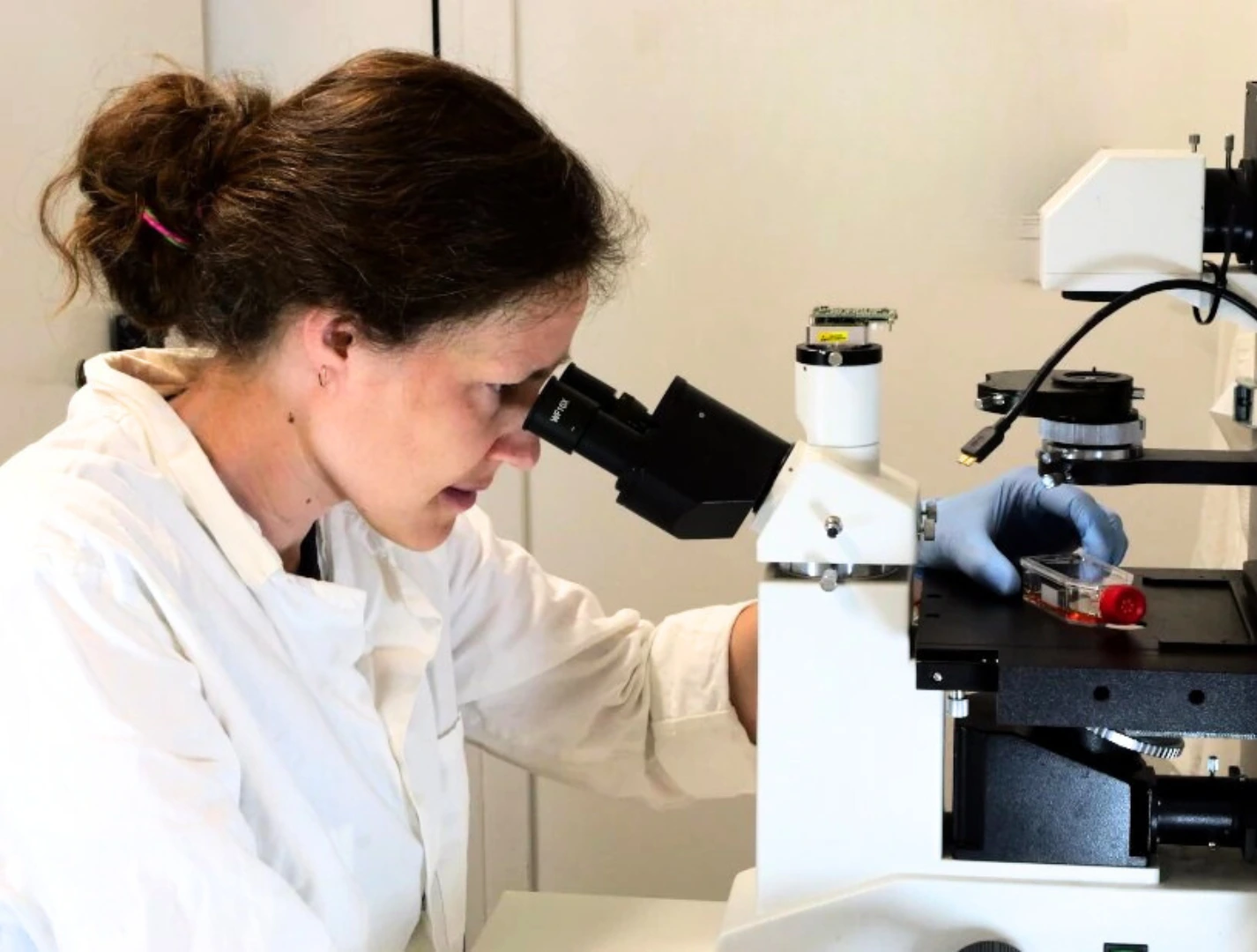Horizon Europe Cluster 5 - Climate, Energy & Mobility
Work Programme 2026-2027
Writer
Celeste Chidiac, PhD
Keywords
Microfluidic Devices, Intelligent Microfluidics, Artificial Intelligence, Machine Learning
Opening
Dec 2025, May/Jun/Aug/Nov/Dec 2026, May/Jun/Aug 2027
Deadline
Mar/Ap/Sep/Oct/Dec 2026/2027
Keywords
Intelligent Microfluidics
Deep Learning
Microfluidic Devices
Artificial Intelligence
Machine Learning
clean energy
sustainable mobility
environmental protection
Your microfluidic SME partner for Horizon Europe!
We take care of microfluidic engineering, work on valorization and optimize the proposal with you
Calls ordered by microfluidic relevance
Horizon Europe Cluster 5 2026-2027
We have sorted the calls for projects from Horizon Europe Cluster 5 2026-2027 according to the impact that microfluidics can have on the calls for projects and related topics. We are sharing our analysis in case it can help you with project funding efforts. And, of course, if our expertise can be of use to you, we would be delighted to discuss it further.

How to read the stars in terms of % of microfluidic technologies’ relevance for the call:
By microfluidic relevance, we mean the relevance of using microfluidic technologies for the topic cited. But also, to a lesser extent, what a microfluidic laboratory or SME could contribute to the topic (mainly for calls with low relevance to microfluidic technologies).
Relevance (%) | 90-100 | 80-89 | 70-79 | 60-69 | 50-59 |
Relevance (*) | ***** | **** | *** | ** | * |
Quick picking guide (what microfluidics should target first)
- Thermal management & heat recovery
- D4‑06 (IT rooms/edge DCs) → flagship fit for microfluidics’ micro‑cooling & heat‑upgrade IP.
- D4‑08 / D4‑09 (industrial heat upgrade & WH2P) → micro‑HX and compact heat‑pump components.
- Battery manufacturing / durability / LDBES
- D2‑03, D2‑06, D2‑01, D2‑02, D2‑08; plus waterborne D5‑18 and road D5‑01 / D5‑05 / D5‑06 for systems integration and safety.
- CCUS & DAC
- D3‑31 (DAC), D3‑30 (aquifer appraisal), D3‑33 (industrial clusters) → lab‑on‑chip porous media, micro‑contactors and sensorised capture modules.
- PV manufacturing
- D3‑14 / D3‑16 / D3‑13 / D3‑15 / D3‑17 / D3‑18 → flow‑chemistry inks, micro‑coating control, reliability sealing.
More information can be found in the CL5 work programme draft: Cluster 5 – Climate, energy, and mobility
(Details for topics that have more than 50% relevance to microfluidics are provided below, ordered by decreasing microfluidic relevance)
Discover more!
Horizon Europe Cluster 5 2026-2027 Calls ordered by microfluidic relevance
Download the Cluster 5 2026-2027 Call Calendar
***** HORIZON‑CL5‑2027‑05‑D4‑06 – THERMAL ENERGY OPTIMISATION AND WASTE HEAT RECOVERY OF HIGH ENERGY DEMAND IT ROOMS IN BUILDINGS OR SMALL EDGE DATA CENTRES
- Type of action: IA
- Opening 05 May 2027, Deadline 15 Sep 2027
- Budget (topic, M€): 16.50. Expected EU contribution per project (M€): ~5.50. # projects: 3.
- Scientific focus: Demonstrate solutions in real buildings/edge data centres to cut cooling energy use, recover/upgrade waste heat and optimise whole‑system energy flows around IT rooms; emphasis on integration, monitoring, control and replicability in EU building stock.
- Why microfluidics:
- Micro‑channel cold plates & heat exchangers to increase heat flux removal and reduce pump power in high‑density racks.
- Two‑phase microfluidic cooling architectures for hotspots and chip‑level thermal management.
- Compact heat‑pumps/micro‑evaporators enabling higher‑temperature waste heat recovery for DHW/low‑temp networks.
- Real‑time flow sensing & model‑based control (µ‑sensors integrated in coolant loops) to minimise exergy losses.
- Retrofit kits for edge sites (standardised manifolds, quick‑connect microchannels) to accelerate replication across facilities.
***** HORIZON‑CL5‑2026‑10‑D2‑03 – INTEGRATED PRODUCTION AND PRODUCT DEVELOPMENT FOR NEXT‑GENERATION LITHIUM‑BASED BATTERIES FOR MOBILITY (BATT4EU & MADE IN EUROPE)
- Type of action: IA
- Opening 04 Jun 2026, Deadline 08 Oct 2026
- Budget (topic, M€): 105.00. Expected/project: ~35.00. # projects: 3.
- Scientific focus: Integrate cell manufacturing innovations with vehicle‑level product development to shorten time‑to‑industrialisation of new Li‑battery generations; tight coupling of process, quality, design, and sustainability by design across the value chain.
- Why microfluidics:
- Microreactor synthesis of active materials (precursors, coatings) for narrow PSD and high batch‑to‑batch reproducibility.
- In‑line microfluidic QC (ink/slurry rheology, solvent ratio, contaminant detection) feeding process control.
- Micro‑patterned current collectors and micro‑porous separator engineering to improve ion transport and fast‑charge tolerance.
- Thermal management at module level using micro‑channel plates compatible with MCS/megawatt charging profiles.
****HORIZON‑CL5‑2027‑02‑D2‑06 – SUSTAINABLE AND COMPETITIVE CELL PRODUCTION TECHNIQUES FOR LITHIUM‑ION AND SODIUM‑ION BATTERIES (BATT4EU)
- Type of action: IA
- Opening 03 Dec 2026, Deadline 31 Mar 2027
- Budget (topic, M€): 40.00. Expected/project: ~20.00. # projects: 2.
- Scientific focus: Scale innovative cell manufacturing routes (incl. sodium‑ion), productivity and quality by design, lowering energy use and toxic solvents, and increasing EU competitiveness.
- Why microfluidics:
- Solvent‑free & water‑based slurry control via micro‑mixers delivering precise dispersion/viscosity windows.
- In‑situ microfluidic metrology for coating uniformity/porosity; micro‑imprint texturing of electrodes for improved kinetics.
- Flow‑cell testbeds for rapid degradation/fast‑charge stress mapping.
**** HORIZON‑CL5‑2026‑09‑D2‑01 – PRODUCING BATTERY‑GRADE MATERIALS FOR ELECTRODES THROUGH SUSTAINABLE PROCESSING/REFINING OR BIO‑BASED MATERIALS (BATT4EU)
- Type of action: RIA
- Opening 05 May 2026, Deadline 15 Sep 2026
- Budget (topic, M€): 30.00. Expected/project: ~7.50. # projects: 4.
- Scientific focus: Develop sustainable refining/processing routes for battery‑grade electrode materials or bio‑based alternatives, targeting EU strategic autonomy, cost and eco‑impact reductions.
- Why microfluidics:
- Continuous‑flow microreactors for controlled precipitation/coating/etching with improved yield and reduced solvent use.
- Lab‑on‑chip screening of leaching/solvent extraction systems; accelerated residence‑time optimisation.
- Inline spectro‑fluidic analytics (UV‑vis/Raman) for purity control.
**** HORIZON‑CL5‑2026‑03‑D2‑02 – DEVELOPMENT OF DIRECT RECYCLING PROCESSES (BATT4EU)
- Type of action: RIA
- Opening 18 Dec 2025, Deadline 31 Mar 2026
- Budget (topic, M€): 15.00. Expected/project: ~5.00. # projects: 3.
- Scientific focus: Direct recycling and reconditioning of active materials (avoiding full re‑synthesis), minimising energy/chemical footprints and preserving cathode microstructure/performance.
- Why microfluidics:
- Selective particle re‑lithiation/coating in microreactors; fractionation of black mass using micro‑hydrodynamics.
- On‑chip failure/aging diagnostics to direct parts to reuse vs. regenerate vs. recycle.
**** HORIZON‑CL5‑2027‑05‑D2‑08 – DEMONSTRATION FOR LONG‑DURATION BATTERY ENERGY STORAGE SYSTEMS (BATT4EU)
- Type of action: IA
- Opening 05 May 2027, Deadline 15 Sep 2027
- Budget (topic, M€): 20.00. Expected/project: ~10.00. # projects: 2.
- Scientific focus: Full‑scale LDBES demonstrations (e.g., novel battery chemistries, systems, and controls) supporting grid/industrial use cases with high reliability and circularity.
- Why microfluidics:
- Flow‑battery architectures and micro‑channel electrodes to reduce shunt currents/pressure drops.
- Membrane/SEI conditioning in micro‑cells for durability screening.
- Thermal plates & distributed sensing for performance/safety at long duration.
*** HORIZON‑CL5‑2027‑03‑D5‑18 – ENHANCED ELECTRIC OPERATION AND BATTERY DURABILITY (ZEWT)
- Type of action: IA
- Opening 15 Dec 2026, Deadline 14 Ap 2027
- Budget (topic, M€): 20.00. Expected/project: ~10.00. # projects: 2.
- Scientific focus: Demonstrate fully‑battery‑electric waterborne solutions with ≥150 nm autonomy and >5 MW peak propulsion, fast charging, optimised energy architecture, and battery lifetime/safety in maritime conditions.
- Why microfluidics:
- High‑power thermal management (micro‑channel plates, phase‑change micro‑loop heat sinks).
- On‑board microfluidic BMS sensors (gas, electrolyte decomposition markers) for predictive maintenance.
- On‑chip fast‑charge degradation studies under salt‑mist/thermal cycling representative of maritime use.
*** HORIZON‑CL5‑2026‑09‑D4‑08 – FULL‑SCALE DEMONSTRATION OF HEAT UPGRADE SOLUTIONS IN INDUSTRIAL PROCESSES
- Type of action: IA
- Opening 05 May 2026, Deadline 15 Sep 2026
- Budget (topic, M€): 19.00. Expected/project: ~9.50. # projects: 2.
- Scientific focus: Industrial heat‑upgrade (e.g., high‑lift heat pumps, recuperators) demonstrated at full scale to decarbonise process heat demand and enable cross‑site waste‑heat valorisation.
- Why microfluidics:
- Micro‑heat‑exchanger cores with high UA/compactness for low‑GWP working fluids.
- Micro‑evaporators/condensers improving COP and partial‑load stability.
- Embedded flow/temperature sensor networks for digital twins and control.
*** HORIZON‑CL5‑2027‑02‑D3‑31 – ADVANCEMENTS IN DIRECT AIR CAPTURE
- Type of action: RIA
- Opening 03 Dec 2026, Deadline 31 Mar 2027
- Budget (topic, M€): 18.00. Expected/project: ~9.00. # projects: 2.
- Scientific focus: New DAC materials, contactors, and process intensification to reduce energy penalty and costs; integration pathways and environmental performance.
- Why microfluidics:
- Micropacked contactors & intensification (short diffusion paths, high a/V).
- Microreactor regeneration studies for novel sorbents/solvents under rapid thermal or moisture swings.
- On‑chip capture kinetics & mass‑transfer mapping to accelerate materials down‑selection.
*** HORIZON‑CL5‑2027‑07‑D3‑33 – DELIVERY OF INDUSTRIAL CCUS CLUSTERS – SOCIETAL READINESS PILOT
- Type of action: IA
- Opening 04 Aug 2027, Deadline 01 Dec 2027
- Budget (topic, M€): 30.00. Expected/project: ~10.00. # projects: 3.
- Scientific focus: Deploy cluster‑scale CCUS with societal‑readiness measures, data‑driven decision‑making, permitting, and cross‑value‑chain coordination.
- Why microfluidics:
- Lab‑on‑chip porous‑media analogues to de‑risk injection/transport—capillary trapping, wettability, leakage detection.
- Microreactor capture modules for integration with industrial emitters and sensorised monitoring of impurities.
*** HORIZON‑CL5‑2026‑05‑D5‑01 – LARGE‑SCALE DEMONSTRATION OF HEAVY‑DUTY BATTERY ELECTRIC VEHICLES (HD BEV) TOWARDS LONG‑HAUL LOGISTICS
- Type of action: IA
- Opening 04 Aug 2027, Deadline 01 Dec 2027
- Budget (topic, M€): 68.00. Expected/project: ~34.00. # projects: 2.
- Scientific focus: Demonstrate long‑haul HD‑BEV with MCS‑compatible charging, vehicle/route energy optimisation, and fleet‑level operations.
- Why microfluidics:
- Battery pack thermal plates & manifolds for ultra‑fast charge heat extraction.
- Microfluidic safety sensors (off‑gas, HF) to mitigate thermal runaway during MCS events.
- On‑board coolant conditioning modules to stabilise viscosity/conductivity at high currents.
*** HORIZON‑CL5‑2026‑03‑D3‑30 – PRE‑COMMERCIAL APPRAISAL FOR CO₂ AQUIFER STORAGE
- Type of action: IA
- Opening 18 Dec 2025, Deadline 31 Mar 2026
- Budget (topic, M€): 25.00. Expected/project: ~5.00. # projects: 5.
- Scientific focus: De‑risk saline aquifer storage through site appraisal, characterization, and monitoring – including injectivity, integrity, and long‑term containment.
- Why microfluidics:
- Pore‑scale flow experiments in micro‑fabricated rock analogues to calibrate reservoir models.
- Chip‑based geochemical reactivity tests (brine-CO₂-rock) under pressure/temperature transients.
** HORIZON‑CL5‑2027‑05‑D4‑09 – DEMONSTRATION OF INDUSTRIAL EXCESS/WASTE HEAT CONVERSION TO MECHANICAL OR ELECTRICAL POWER
- Type of action: IA
- Opening 05 May 2027, Deadline 15 Sep 2027
- Budget (topic, M€): 14.00. Expected/project: ~7.00. # projects: 2.
- Scientific focus: Demonstrate waste‑heat‑to‑power (e.g., ORC/Brayton variants, thermoelectrics) integrated in industrial sites; performance, safety, and business models.
- Why microfluidics:
- Micro‑evaporators/expanders with high heat‑transfer coefficients at low ΔT.
- Modular micro‑HX arrays for fouling‑prone industrial exhausts.
** HORIZON‑CL5‑2027‑07‑D3‑28 – INTEGRATED APPROACHES FOR RETROFITTING INFRASTRUCTURES WITH INNOVATIVE ENERGY STORAGE TECHNOLOGIES
- Type of action: IA
- Opening 04 Aug 2027, Deadline 01 Dec 2027
- Budget (topic, M€): 24.00. Expected/project: ~8.00. # projects: 3.
- Scientific focus: Retrofit critical infrastructures with innovative storage (electrical/thermal), validated in operations with interoperable control and safety.
- Why microfluidics:
- Thermal storage modules using micro‑channel PCM encapsulation.
- Compact battery thermal loops with µ‑sensors for aging-aware dispatch.
** HORIZON‑CL5‑2027‑02‑D3‑16 – PRODUCTION TECHNOLOGIES FOR SOLAR PHOTOVOLTAICS BEYOND THE STATE‑OF‑THE‑ART (EUPI‑PV)
- Type of action: IA
- Opening 03 Dec 2026, Deadline 31 Mar 2027
- Budget (topic, M€): 39.00. Expected/project: ~13.00. # projects: 3.
- Scientific focus: Advance EU PV production (e.g., tandem, high‑efficiency cells/modules) with scalable equipment and reduced critical materials.
- Why microfluidics:
- Microfluidic deposition/ink delivery for perovskite/transport layers.
- Flow‑chemistry synthesis of nano‑inks and encapsulants with real-time QA.
** HORIZON‑CL5‑2026‑03‑D3‑14 – INDUSTRIAL PROCESSES & EQUIPMENT FOR INNOVATIVE, RELIABLE & SCALABLE TANDEM TECHNOLOGIES (EUPI‑PV)
- Type of action: IA
- Opening 18 Dec 2025, Deadline 31 Mar 2026
- Budget (topic, M€): 30.00. Expected/project: ~10.00. # projects: 3.
- Scientific focus: Manufacturing routes & tools for tandem PV with reliability and scale.
- Why microfluidics: Micro‑metre‑scale coating/annealing control and micro‑patterned wettability to improve film uniformity and yield.
** HORIZON‑CL5‑2026‑11‑D3‑15 – IMPROVED SYSTEM DESIGN FOR INNOVATIVE PV APPLICATIONS (EUPI‑PV)
- Type of action: IA
- Opening 04 Aug 2026, Deadline 01 Dec 2026
- Budget (topic, M€): 30.00. Expected/project: ~7.50. # projects: 4.
- Scientific focus: Innovative PV system integration (architectural/industrial), reliability, circularity.
- Why microfluidics: Encapsulant/adhesive flow processing and edge‑seal micro‑barriers against moisture ingress.
* HORIZON‑CL5‑2026‑5‑D5‑11 – SCALABILITY OF SOLID OXIDE FUEL CELLS FOR WATERBORNE TRANSPORT (ZEWT + CLEAN HYDROGEN JU)
- Type of action: RIA
- Opening 18 Dec 2025, Deadline 14-15 Apr 2026
- Budget (topic, M€): 16.00. Expected/project: ~8.00. # projects: 2.
- Scientific focus: Scale SOFC solutions for maritime, addressing durability, system integration, and safety.
- Why microfluidics: Micro‑channel reformers/steamers and high‑temp micro‑HX for compact balance‑of‑plant; on‑chip degradation diagnostics.
* HORIZON‑CL5‑2026‑03‑D3‑22 – NOVEL SOLUTIONS FOR OFF‑GRID STORAGE OF RENEWABLE ENERGY FOR CRITICAL INFRASTRUCTURES
- Type of action: IA
- Opening 18 Dec 2025, Deadline 31 Mar 2026
- Budget (topic, M€): 12.00. Expected/project: ~4.00. # projects: 3.
- Scientific focus: Demonstrate off‑grid storage packages with resilience/black‑start for critical sites.
- Why microfluidics: Pack‑level micro‑thermal loops and multiphysics sensors for reliability in harsh environments.
* HORIZON‑CL5‑2026‑03‑D3‑21 – HYBRID AI‑CONTROL FRAMEWORK FOR A NEXT‑GENERATION GRID‑SCALE ENERGY STORAGE AND SYSTEM INTEGRATION
- Type of action: IA
- Opening 18 Dec 2025, Deadline 31 Mar 2026
- Budget (topic, M€): 14.00. Expected/project: ~7.00. # projects: 2.
- Scientific focus: AI-based control/dispatch for grid-scale storage, integrating hardware constraints.
- Why microfluidics: Interface cell‑level thermal/electrochemical sensors to AI controllers—data streams grounded in micro‑scale phenomena.
* HORIZON‑CL5‑2027‑03‑D5‑05 – HIGHER VOLTAGE, MCS‑COMPATIBLE, MODULAR POWERTRAIN FOR HEAVY DUTY VEHICLES
- Type of action: IA
- Opening 15 Dec 2026, Deadline 14 Ap 2027
- Budget (topic, M€): 40.00. Expected/project: ~20.00. # projects: 2.
- Scientific focus: Modular HV powertrains compatible with Megawatt Charging System, safety, and interoperability.
- Why microfluidics: Dielectric coolant micro‑manifolds, safety sensing micro‑chips for early venting/off‑gas detection during ultra‑fast charging.
* HORIZON‑CL5‑2026‑03‑D3‑13 – LONG‑LIFETIME & OPTIMISED USE OF MATERIALS IN RECYCLABLE Ag & In‑FREE Si PV MODULES (EUPI‑PV)
- Type of action: RIA
- Opening 18 Dec 2025, Deadline 31 Mar 2026
- Budget (topic, M€): 15.00. Expected/project: ~5.00. # projects: 3.
- Scientific focus: Materials and module design targeting recyclability and precious metal‑free BOM.
- Why microfluidics: Micro‑patterned busbar pastes and directed‑flow encapsulation to minimize material usage and defects.
Note on additional topics:
The CL5 2026‑2027 contains ~100 topics across Destinations D1-D6. Above, this page fully details the highest‑relevance set for microfluidics and provides compact entries for additional energy/transport topics where microfluidics is a secondary enabler. Many remaining topics are policy, modelling, social sciences, or digital‑only (e.g., D1 climate science, D6 CCAM policy/AI/urban mobility). For these, microfluidics’ fit is ≤30%.
The MIC already brings its expertise in microfluidics to Horizon Europe:
H2020-NMBP-TR-IND-2020

Microfluidic platform to study the interaction of cancer cells with lymphatic tissue
H2020-LC-GD-2020-3

Toxicology assessment of pharmaceutical products on a placenta-on-chip model
FAQ - Horizon Europe Cluster 5 2026-2027 ordered by microfluidic relevance
What's "Cluster 5" - how’s it linked to microfluidics?
Cluster 5 deals with Climate, Energy, or Mobility. Though these topics seem large, a lot depends on precise control of fluids, heat, and reactions at small scales – battery electrolytes, hydrogen handling, fuel-cell diagnostics, lab-on-chip for emissions, microreactors for synthetic fuels, controlling heat, and sensors working during processes. Using microchannels speeds testing, reduces reaction risks, and enables real-time measurements.
What makes a subject fit within microfluidics?
- Is the subject open to sensors, boosting efficiency, or real-time checks?
- Do microreactors, flow chemistry, or lab-on-chip reduce risk by speeding up tests while keeping tight feedback loops?
- Can we realistically reach TRL 5-7 test runs or small-scale production setups?
If two or more answers are “yes,” it’s likely to work well.
What parts of Cluster 5 work best with microfluid systems?
- Net-zero fuels & chemicals: using flow electrolysis along with CO₂ conversion, plus moving energy via ammonia or hydrogen, while making synthetic fuels – microreactors speed up testing and cut risks.
- Battery & hydrogen systems: tracking electrolytes, identifying where gas meets liquid, inspecting membranes, and assessing wear over time.
- Clean mobility & thermal management: compact heat exchangers, coolant control, emissions sampling, on-board diagnostics – chips and capillary networks keep prototypes nimble.
Are calls looking for advanced prototypes, or will basic research do?
One appears alongside the other, yet plenty of hands-on technical subjects need a bridge – moving tested lab pieces (TRL 3-4) into real-world trials (TRL 5-6). When your strength lies in faster breakthroughs or safer methods, position it as a way to cut uncertainty as things scale up.
What makes a solid microfluidic work package stand out in this place?
- A tested microreactor linked to a sensor unit, including working boundaries, along with potential breakdown ways.
- An automated screening loop (tests planned ahead, command files, data sets)
- Clean switch to the demo crew – includes tools, setup checks, and file types
- A clear line from lab results to overall performance markers like efficiency or lifespan – including environmental impact factors
Show what makes this chip accelerate progress toward the demo, and highlight its impact, not just clever design.
How exactly do SMEs boost worth inside a Cluster 5 group?
When moving fast from lab tests to actual use, a focused SME – say, the Microfluidics Innovation Center (MIC) – helps lower risks by streamlining trials, setting up automated processes, creating durable test models, while making sure records stay clear for evaluators. From what we’ve seen, involving skilled microfluidics support at the start boosts trust and success odds, since methods click better right away thanks to smoother transitions.
What does MIC bring?
- Faster testing using automated systems that run on their own – like flow setups, temperature control
- Custom microfabrication (polymers, glass, silicon) and packaging for harsh media
- In-line sensors feed data you can track back; these flow measurements act as stand-ins for mass movement
- Chip to manifold, then on to pilot skid – size matters at every step
- Proposal building: goals, key checks, possible hiccups, or backup paths open for review
Quick examples in Cluster-5-style tasks
- CO₂ → e-fuels using quick catalyst checks, efficiency tracking closely tied to durability across rapid test runs.
- Hydrogen research uses micro-cells to monitor how bubbles move, seepage occurs, and wear develops – while microchannels help spot leaks more quickly without risking safety.
- Batteries: micro-calorimetry and electrolyte transport cell; mini cooling to handle battery temps.
- Clean mobility: small-scale emission or air testing with instant breakdowns, driving smart controls.
What do evaluators look for beyond the science?
- Operational credibility: straightforward testing setups, updates tracked, quality checked.
- Integration realism: how parts link up, what holds them in place, how they handle weather or rough conditions.
- Data stewardship means getting data ready for reuse, controlling who can see it based on ownership rules, while linking hardware stats clearly to performance goals, environmental impact checks, plus compliance needs.
Our technology's just starting. Even so, could we squeeze into a 2026 or 2027 window?
Yep, that works – so long as your project shows a solid push up to TRL 4–5: think fast cycles you can run on autopilot, obvious stop signs if things go sideways, also someone lined up who’ll actually plug in the near-final version. Judges don’t mind raw tech, just prove there’s a real plan to cut the risks.
The quickest method to get MIC involved when these calls come up
Two steps fit together nicely:
A half-hour chat to match your concept with probable themes from 2026 to 2027.
A single page covers the issue, microfluidic tools, key targets, likely tech level soon, and who’ll test it with us.
From that point on, MIC handles writing sections focused on microfluidics, along with setup strategies, timeline maps, or breakdowns of possible setbacks. Mixing tiny-scale manufacturing with smart automation and solid pitch design usually makes a decent concept something grants can back.



